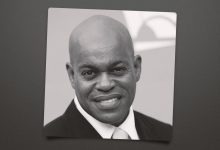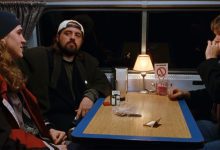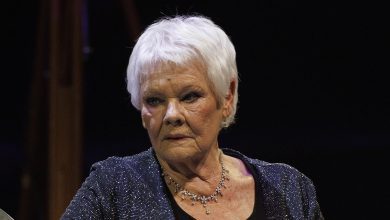Anne Rice’s ‘Talamasca: The Secret Society,’ Explained After Premiere
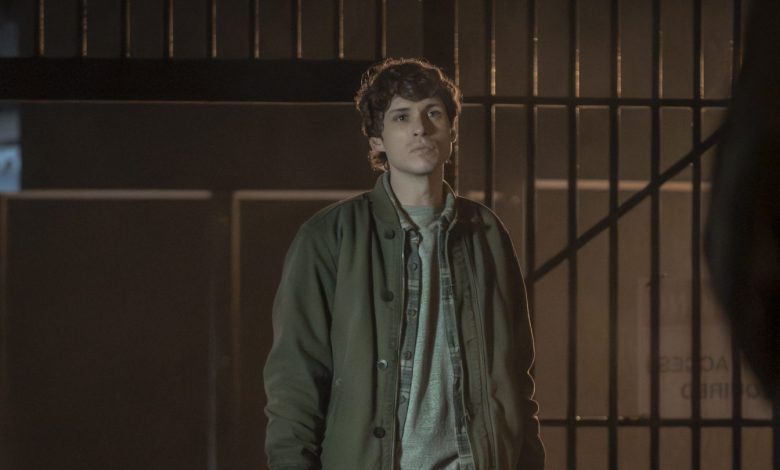
[This story contains spoilers for the first two episodes of Talamasca: The Secret Society.]
On Sunday, Anne Rice’s Immortal Universe expanded with the two-episode premiere of Talamasca: The Secret Society.
Following on the heels of Interview With a Vampire, which will air its anticipated third season next year, and Mayfair Witches — which was renewed for season three last spring — the third installment in AMC’s adaptation of Rice’s popular books follows the Talamasca, a secret society featured in both the Vampire Chronicles and Lives of the Mayfair Witches.
These covert, trained agents are a mix of those with and without “abilities,” who operate worldwide out of “motherhouses” or bases. These anthropological detectives of sorts are charged with quietly monitoring, researching and investigating the supernatural entities that make up the Immortal Universe.
Members of the Talamasca have already appeared in both Interview With a Vampire and Mayfair Witches — and characters from both are set to appear in Talamasca. But in the two-hour premiere, these familiar faces do not take center stage. Instead, audiences enter this society via a young man named Guy Anatole (Nicholas Denton), who is struggling to pay rent and desperate to score a job at a well-paying law firm.
But those plans are derailed with the arrival of the Talamasca’s Helen (Elizabeth McGovern). Not only does she bring to this young skeptic the very real existence of supernatural creatures, but she also carries an invitation to join the society. In the premiere’s early minutes, a young woman on a mission falls prey to a vampire and his frightening creatures known as revenants, sparking Helen’s decision to bring Guy into the fold.
Once that door is opened, not only can’t Guy turn back, but out pours a stream of shocking truths. Raised by strangers due to his mother’s drug addiction, Guy has also struggled much of his life with hearing voices. But Helen reveals his voices are actually a supernatural ability that allows him to peer inside people’s minds. He also discovers that Helen knew about him his entire life and set him up with his family to keep him close, if the moment called.
And the moment has called, forcing Guy — a man with no passport, and virtually no training in the realm of supernatural defense — to fly from New York to London to investigate a frightening and powerful vampire named Jasper (William Fichtner) who has infiltrated the London motherhouse. But the more Guy gets embedded with the Talamasca, he faces more danger, violence and even death.
By the end of episode two, yet another woman — and supernatural — is dead, forcing Guy to get answers from a number of sources. That includes his Talamasca handler Olive (Maisie Richardson-Sellers), a witch named Doris (Céline Buckens) and vampire Burton (Jason Schwartzman).
The Hollywood Reporter spoke to executive producer/director/co-showrunner John Lee Hancock and EP/co-showrunner Mark Lafferty about their new series, including how they set up this world and cast of characters, how it all fits into the Immortal Universe, and where both existing fans and new audiences can expect it to go.
***
Six episodes were ordered for the first season. The TV model has moved in the direction of smaller episode orders, but six is still smaller than the other Immortal Universe shows. Is this the first of many seasons or limited? And how does Talamasca fit into the larger shared universe?
JOHN LEE HANCOCK Knock on wood, it goes on for other seasons. We would love that. Whenever you’re writing a season one, you’re already coming up with stuff that happens down the line. In terms of six episodes, we were coming up with stories and they came back and said, “We’re going to follow a European model from now on, where the first season is going to be six, and then if there’s a second season, we’ll go to eight and contemplate from there.”
From the very start, I made it clear to AMC — and thankfully, they completely agreed — that I want this to be a standalone [within the universe]. Not that the other worlds don’t exist. They exist alongside us, and we want to reference each other — whether it’s just because we’re on a time continuum that’s consistent or because we see characters move from show to show. But I want it to be from the start that we have our stories to tell, with an opportunity to reference the other shows. If a character is perfect to bring into our mix, let’s do that. But I don’t want it to be an obligation or us just borrowing characters. We wanted to be our own thing in that same big tent of the Anne Rice universe.
MARK LAFFERTY The six-episode order does force your brain as writers to concentrate things down, and it can be tough. But it also does, in a spy story, electrify the narrative a little bit and get you out of the gate running a little more quickly. John and I, before the season ended, were already jotting down that we could do this and that in season two: Here are the questions we want to answer. Here are the places we want to go. When you’re already looking at the horizon while digging the trenches in front of you, that’s a good feeling as storytellers.
Unlike Interview with the Vampire — now The Vampire Lestat — and Mayfair Witches, your show does not have a book or series it’s explicitly based on. How did you approach this show using what was available to you in Rice’s books, but also a larger creative sandbox?
HANCOCK I looked at it as an opportunity knowing there was no book, but an organization Anne had created where there were several characters who were already Talamasca agents that fit into this as a loosely structured organization. An opportunity to help fill out more stuff that, had she so chosen, she could have written an entire book. That gave us certain latitude and a great sandbox to play in, but there are certain opportunities and limitations. There are Talamasca agents she’s written about that are great characters. But we’re on a timeline along with Interview, so you go, “God, I love this Talamasca character. He’s dead. Oh, how about this character? She’s been turned into a vampire already.”
Then, looking at the Talamasca and trying to create it both for denizens of the Anne Rice community as well as outsiders, I thought the best way to expose the Talamasca to the world was to do so in a grounded way and have someone who didn’t know anything about it enter that world. That’s how I started out with Guy Anatole, who is a skeptic and doesn’t believe in any of it. That was the biggest net to throw out that, hopefully, would reach both Anne Rice fans and people unaware of the Talamasca.
LAFFERTY I had just gotten done helping to write a script on Mayfair Witches, and there’s a little bit of the Talamasca in there. Then I saw what John had so brilliantly done, which was to say: Here are all these agents in this world that are suggested, maybe you get a hint at, you get swaths of in the other books, but you don’t get to hear inside the larger room. This was our opportunity to say: This is such a big, sprawling institution that in Mayfair, if you’re seeing the New Orleans outpost of the Talamasca, that is a very different color and flavor than the New York Motherhouse, which is very separate and apart from what the Amsterdam Motherhouse is.
It suggested this large world within our show. If this universe is already large, the world of the Talamasca is larger and more sprawling than even was suggested in the books. John did such an awesome job allowing us as an audience to have a way into that through Guy in the pilot. You’re an outsider. You don’t know everything, and not even the people in the highest reaches of power there know everything. That’s what makes a good spy story fun.
HANCOCK I also had questions about the Talamasca. How do they recruit? Does everybody have a gift? Is there a Starbucks in the lobby? When you go past the motherhouse, what does it say on the brass plaque out front? Are they hiding in plain sight? Do they cast themselves as a think tank? All those kinds of things. So I created a character that could ask all those questions.
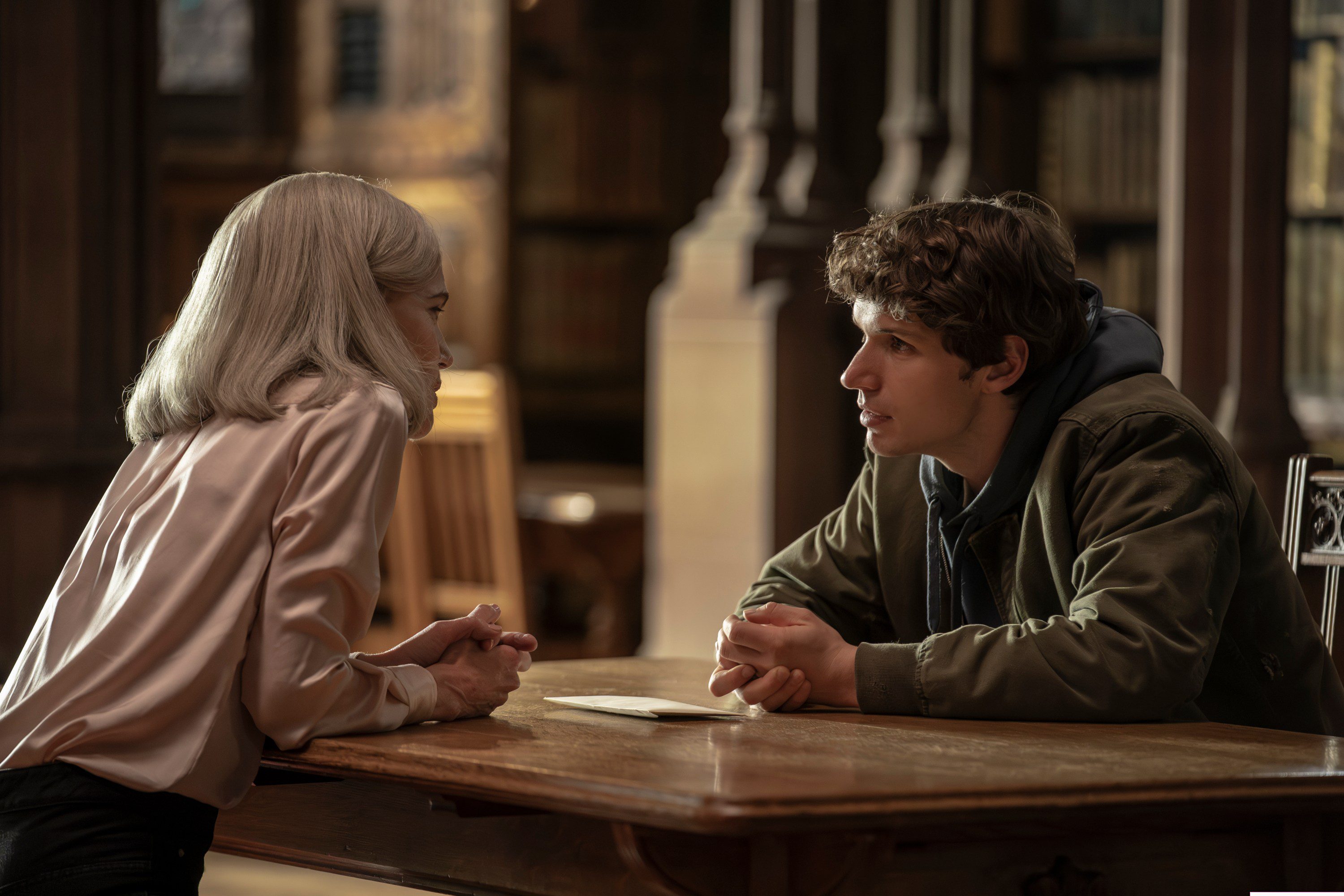
Talamasca does feel different from Mayfair and Interview, but there are still genre and tonal similarities. In what ways does Talamasca overlap with the existing universe of shows for you?
HANCOCK I love spy stories, books and movies. I love John le Carré and those stories that are smaller and about characters. Who do you trust in paranoia? It’s less of a 15-minute action sequence with motorcycles going over an overpass and more of what the real spy stuff is. Then reading more Anne Rice — her description of the inner life of vampires; who they were and the humanity of vampires, and that it can be sad and lonely — drew me in. I could lean into the fact that it’s no fun to bury friend after friend after friend. What a spy world and supernatural world would have in common was their shadows, secrets, loneliness and paranoia. When those two things started dancing together, it made it really interesting.
LAFFERTY That’s the thing we carried into the writers room from the very start: how does the supernatural world of Anne Rice suggest things or overlap with the spy world? What John did such a good job building was that people come from fractured families. There are characters looking for something, trying to find or build a new family, who are coming from family trauma. You have that in the vampire and witches world, too. We started to see that these worlds, which seem so separate, actually overlap very neatly. It’s way more the John le Carré genre than the James Bond version of a spy.
When you watch the Talamasca in the other series, it can feel a little like prestige monster hunting. How are the Talamasca similar or different from that understanding?
HANCOCK That’s a fun way to look at it, but I don’t think these guys are monster hunters. My analogy would be that there are shark hunters out there. There’s Quint from Jaws, and they’re like: Kill the shark. Then you have oceanographers who understand that sharks are necessary to the ecosystem. Now, if there’s an overabundance of sharks that show up off the coast of Cape Town and start killing too many people, they might jump in and remove some of them. They might even have to kill one on occasion, but they understand that in the ecosystem, they have the right and are necessary to belong in the ecosystem. They’d be lost without sharks.
Mayfair and Interview start in New Orleans and exist in different time periods, before expanding locations and jumping through time. Your show starts in two major metropolitan cities — New York and London — set in the modern day. What did those locations and time period let you do that maybe wasn’t always necessarily possible in the other series?
HANCOCK Not unlike the questions I wanted to ask about the Talamasca, I wanted the [characters and audience] to ask real questions about today, and I wanted the show to be grounded. The other two shows are fantastic, and we draw from them and talk with the showrunners all the time. But with those shows, you know what you’re expecting. It’s this world of New Orleans that revolves around these vampires and witches and their families. It’s less about going to a Saints game. I wanted it to be very real and bring some of the supernatural out of the tent into the world, so that they can play among us. I prefer to think of them as they’re amongst us.
In terms of New York and London, because so much of [the universe] had been New Orleans-based — and for good reason — I wanted to be different. So to Mark’s earlier point about how [the Talamasca] have these houses around the world and are an international spy organization that, by the way, deals on a weekly basis with MI6 and CIA as they trade intelligence, I wanted it to be all out in the open. They don’t go out and say, “We’re keeping tabs on vampires.” From the outside world, people can look at them as a think tank that deals with the supernatural, not unlike how the CIA has always had a department that dealt with UFOs. But thinking about major metropolitan cities opened up the world of the Talamasca setting. I wanted to start it in New York, and have a young man on an existential journey. He doesn’t even have a passport, and we’re going to drop him in London. But [there was also] creating the character of Helen, someone who then has to visit home. And as Mark pointed out, something that had evaded me when I was beginning to write is that the first season is about fractured families.
Leads in the Immortal Universe, in the worlds they straddle — are powerful insiders who are also marginalized outsiders. Guy doesn’t seem to fit that bill until we learn about his childhood and disability, which is ultimately an ability. Knowing Louis (Jacob Anderson) and Rowan’s (Alexandra Daddario) stories, how does Guy navigate power, and how does he both have it and not have it?
LAFFERTY Guy from a socio-economic standpoint and [from a disability standpoint] has a mother who was an addict, and he was made, essentially, an orphan, and then put into this system that is really tough. All while having this secret — this ability — that made him feel like he didn’t fit in, that he was something strange. One of the things the Anne Rice universe does so well with those people who feel other is that it then brings them into a place where there are people like them all around. In every aspect of our world, those are stories we could use more of. No matter what walk of life you’re from, you can find something that’s for you. Whether you’re gay, straight, come from whatever socioeconomic background, or are whatever race. Hopefully, a person like Guy is also a way in.
HANCOCK There’s a very optimistic way to look at it, from any child’s standpoint, coming from no parents. But the gift/curse of it always appealed to me because people are very prone to look at someone in Guy’s situation and say, “Don’t talk about that.” Or, “I wish you were different.” A child carries that with them because they’re not old enough, mature enough, or don’t have the requisite wisdom to understand that this thing that everybody thinks is bad or negative is me. It’s who I am. That he’s willing now to declare himself is part of his journey. This curse that Helen identifies as a gift causes him physiological pain to the point that he’s popping pills. So there’s a journey about embracing that part of himself.
People would say, “Every Talamasca has a special gift.” And I thought, “No, that makes them boring.” That makes them a whole other subset of the supernatural world. I’ve been to Langley, to the CIA. Not everybody in there is a super spy. They have a barista and a Starbucks in the lobby. What I’m saying is that’s 95 percent of the people in the Talamasca. They have somebody in charge of HR, and someone who handles the 401Ks. Some of them have special gifts, but I prefer to look at it from the outside as it looks like they have an exceptionally high EQ [emotional intelligence], but this goes far beyond that. I don’t think that they’re recruiting Talamascas by asking, “What’s your special power?” There are three movies a week about people with special powers, and they bore me. I’m more interested in human beings.
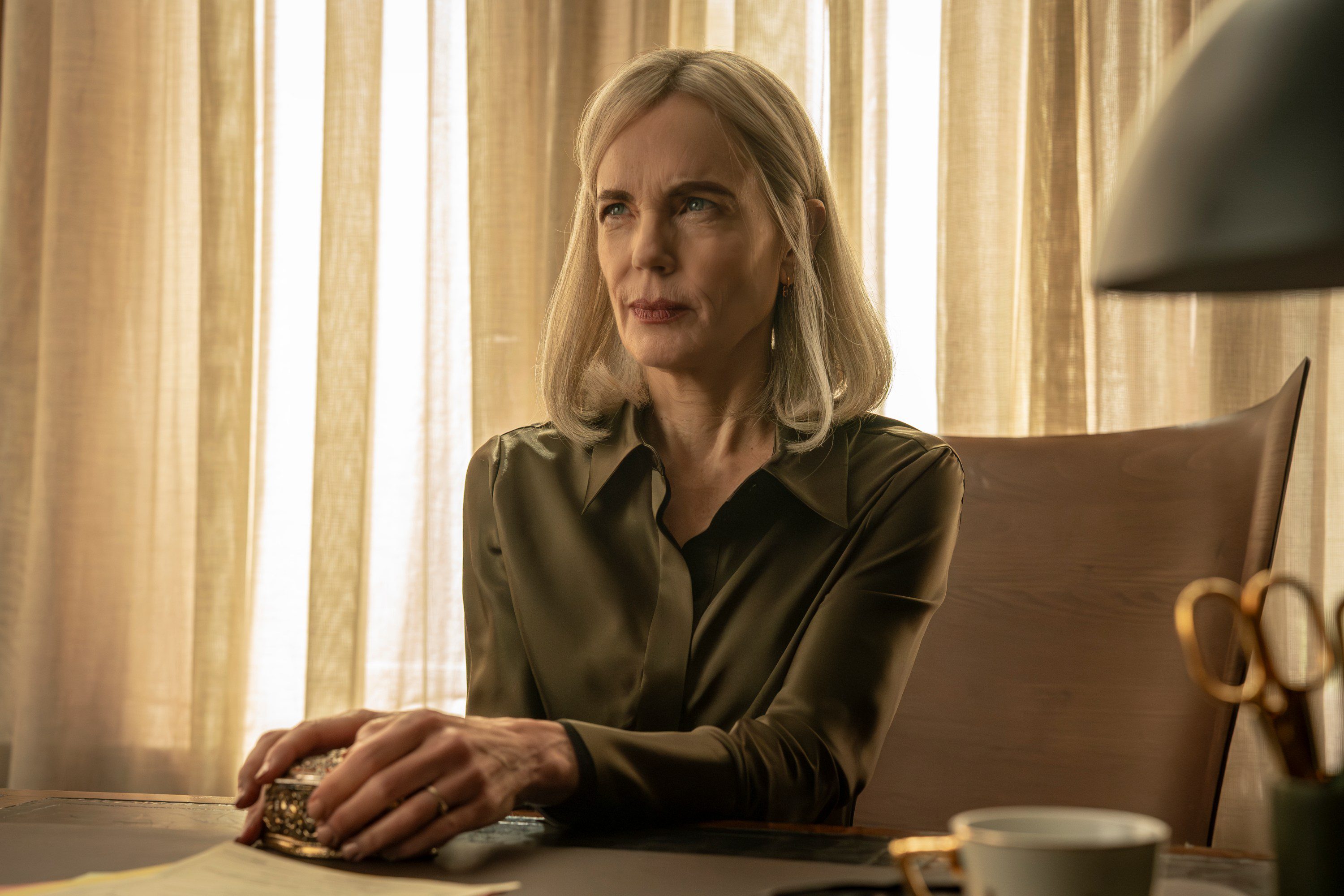
Villains in the Immortal Universe are frequently furtive, clandestine, even insidious, and they’ve always got a backstory. They also tend to be deeply entwined with the protagonist through relationships, which they can use to deploy manipulation, fear and control. In watching the first two episodes, that’s sort of Guy’s relationship with the Talamasca, Helen and Jasper. Villains never see themselves as villains, but are the Talamasca villains?
HANCOCK Lafferty says in the writers room almost every day, “Every villain is a hero in his or her own story.” We’re looking for complicated characters. I don’t want to have the mustache-twirling bad guy. You can have antagonists, but those antagonists are only antagonists when you’re looking through the eyes of the protagonist. I look at the Talamasca the same way I look at the CIA. Is there some purpose behind that? Yes. Are they necessary? Probably. Do they do things that we don’t know about? Yes. Do they get their hands dirty in ways that we might not approve of? Yes. It’s complicated. The same is true for the Talamasca.
LAFFERTY So much of the fun of a spy story is that a spy might enter into the world bright-eyed and bushy-tailed, but the deeper they get into that world is exactly what John’s talking about. You open up a door and another door, and everything goes from black and white to grey and more grey, until everything smears into who can I trust and who can I not trust? Can I even trust myself? When a character gets to that point in a spy story, that’s when you know you’re cooking with gas. When you look at Jasper and you’re like, “That’s the villain,” and then he tells you a story about who he is and where he came from, you go, “Oh, no, I feel for this guy. I feel for his past and where he came from, his family,” and all that. We purposely want to make those kinds of stories and those kinds of characters complex to the point you might start an episode thinking one thing about a character and which side of the line they’re on, and we might take you to the other side of that line by the end of it.
HANCOCK That’s a good point about Jasper. He’s presented as the antagonist in episode one, and yet, he has more humanity he’s willing to express than anybody else. He’s also the person who says, “I will never lie to you. May not like what I have to say, but I will never lie,” and he holds true to that in a show where, at best, the people that you’re supposed to trust, like Helen, are telling half-truths. She’s not completely reliable. Between her and Jasper, you go, who’s the person that I trust more?
While Helen and Jasper feel texturally of the Anne Rice universe, Jason’s character, Burton, is unexpected. Can you talk about crafting that character and making him feel different than some of the other vampires in the larger universe?
HANCOCK One of the first questions I asked when I was writing was, “What would it take for me if somebody came and said, ‘Your life’s kind of been a piece of fiction you’ve been living as though it’s real, and we’re responsible in many ways for it, and we want you to join this organization. Oh, yes, and there are vampires.’” I would go, “Well, I don’t believe in that.” And then the line for Helen came out in my brain: “Nobody does until they meet one.” I thought this was a big moment for our show. We’ve got this skeptic who’s going to meet a vampire, and who is that vampire? I wanted it to be complicated. I didn’t mind that it could be a little funny at times. I didn’t want it to be a dark room with someone in a velvet chair, looking, and you see their eyes, even though I knew that would be scary. I wanted to meet it on its own terms. So who’s the unexpected vampire?
I had worked with Jason Schwartzman on Saving Mr. Banks. I love Jason, so I called him and asked, “Do you want to be a vampire?” And he said, “Absolutely.” The thing about that character is that he is someone who has sold out vampires. He is being put up in The Dakota in New York and has a wonderful life. Yet it’s lonely, and he doesn’t fully trust the Talamasca, even though they’re paying his way and bringing him gifts. In my mind, all those televisions that are up on the wall, he doesn’t have a lot of friends, so he and the woman who runs his life, along with Helen, probably sit on Tuesday night, and watch reality television on Bravo. That’s not a vampire that I’ve seen, and I like that.
I also thought he could be a truth teller. To see how gifted Guy is, and know that that is dangerous for this young man. He knows he’s being presented. He’s the first vampire that this young man has ever met. How does he expect me to look? I told Jason, “Here’s the thing I can tell you about this character: he changed clothes five times in anticipation of this meeting to be just right.” Jason said, “That’s a character I can play.” I wanted it to be something that was unexpected, but I also wanted him to be a truth teller and say they’re not to be fully trusted. You’re in danger. Your gifts are your gifts, and they are pretty strong, so strong that they’re going to open doors to you that are really dangerous.
You do have an Interview cameo in the pilot. It’s Eric Bogosian’s Daniel Molloy. Can you talk about why he felt like the character to crossover and his connection to Guy and the Talamasca?
HANCOCK We had something we were trying to engage in the pilot. And looking at Molloy, it just seemed like it was so hand in glove. Here’s a guy who’s published a book, and the Talamasca has vetted this book. This is great for us. We can use that as a complication in our story, that there’s a bit of information there that ties right into our world that seems so natural. It seemed exactly the kind of thing Molloy would have run into. Eric Bogosian is such a phenomenal actor. He’s been so great in that role. He’s somebody who John, [EP] Mark Johnson, [EP] Tom Williams and I have loved since Talk Radio. For all of us to be able to have that character wash into our world not only expands the universe, but it doesn’t feel like a lowercase easter egg. This makes sense and is integral to our story. It’s like, “Oh, my God, Eric Bogosian is here in our story? Why is he here?” And then, of course, when he opens his mouth, you’re like, “Well, this makes perfect sense.”
***
Talamasca: The Secret Society’s first two episodes are available to watch, with new episodes releasing Sundays on AMC and AMC+.
HiCelebNews online magazine publishes interesting content every day in the TV section of the entertainment category. Follow us to read the latest news.

